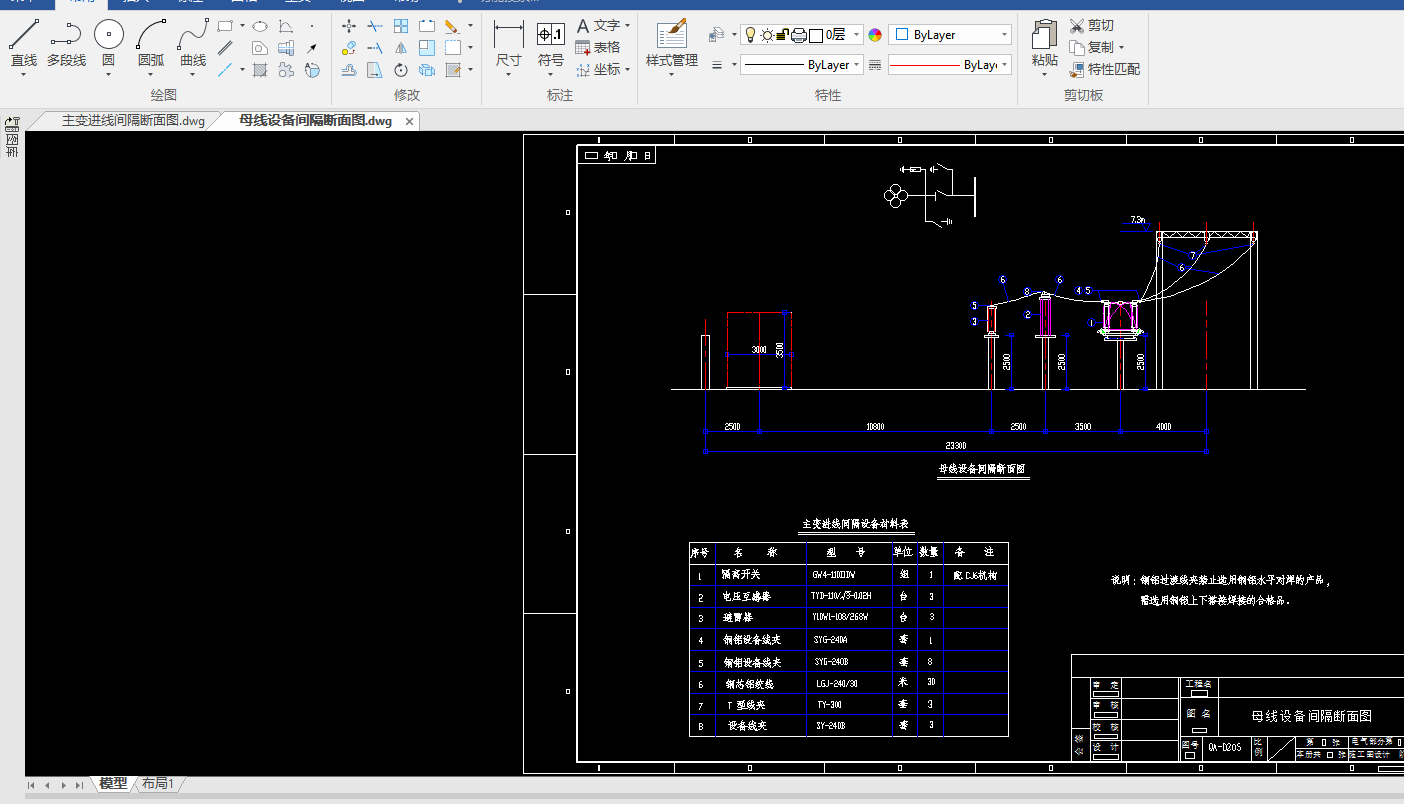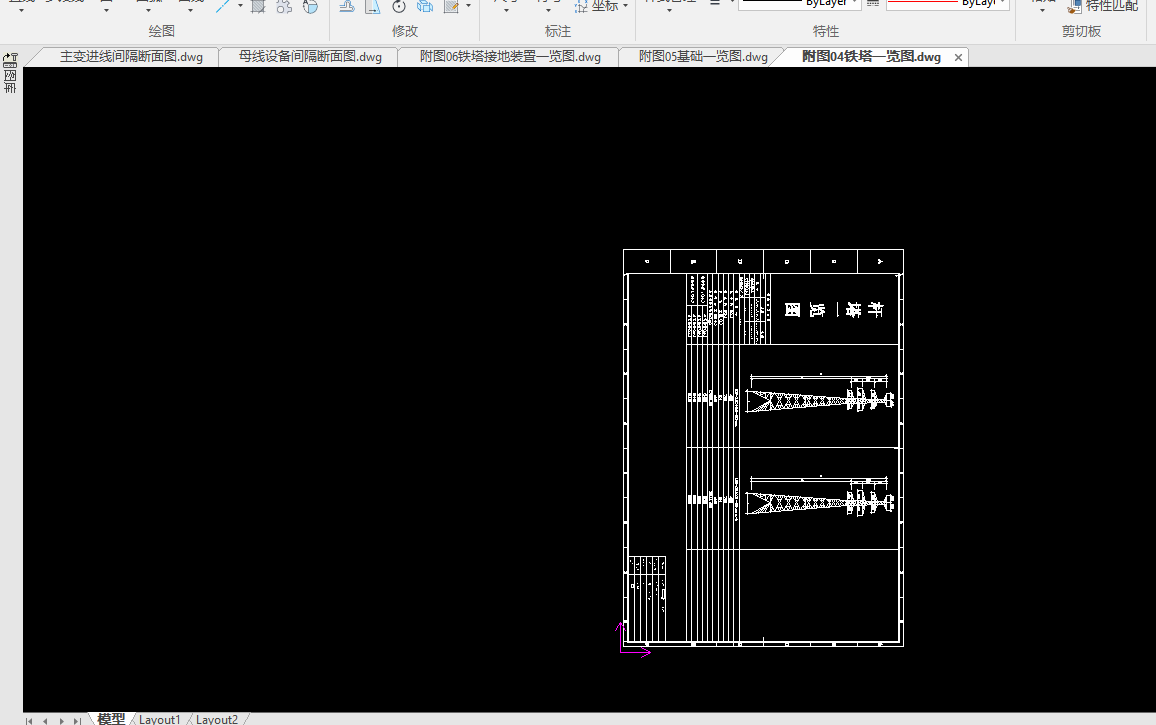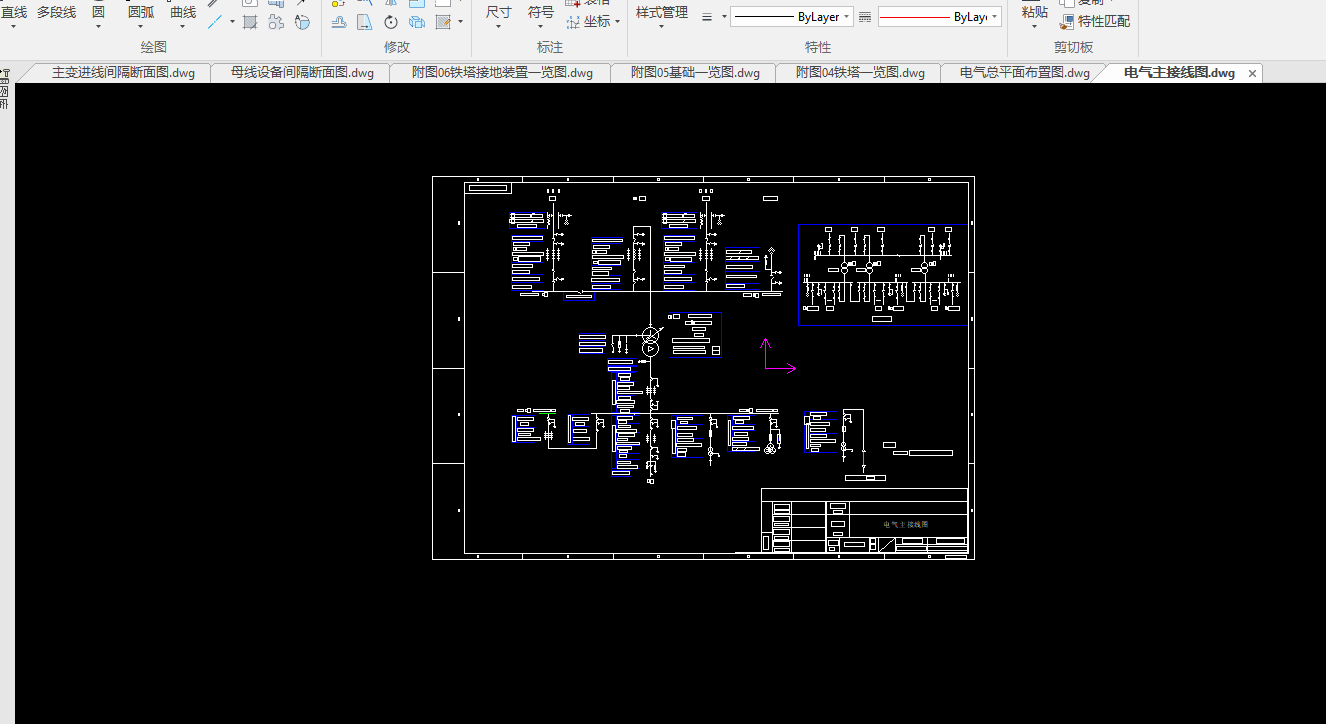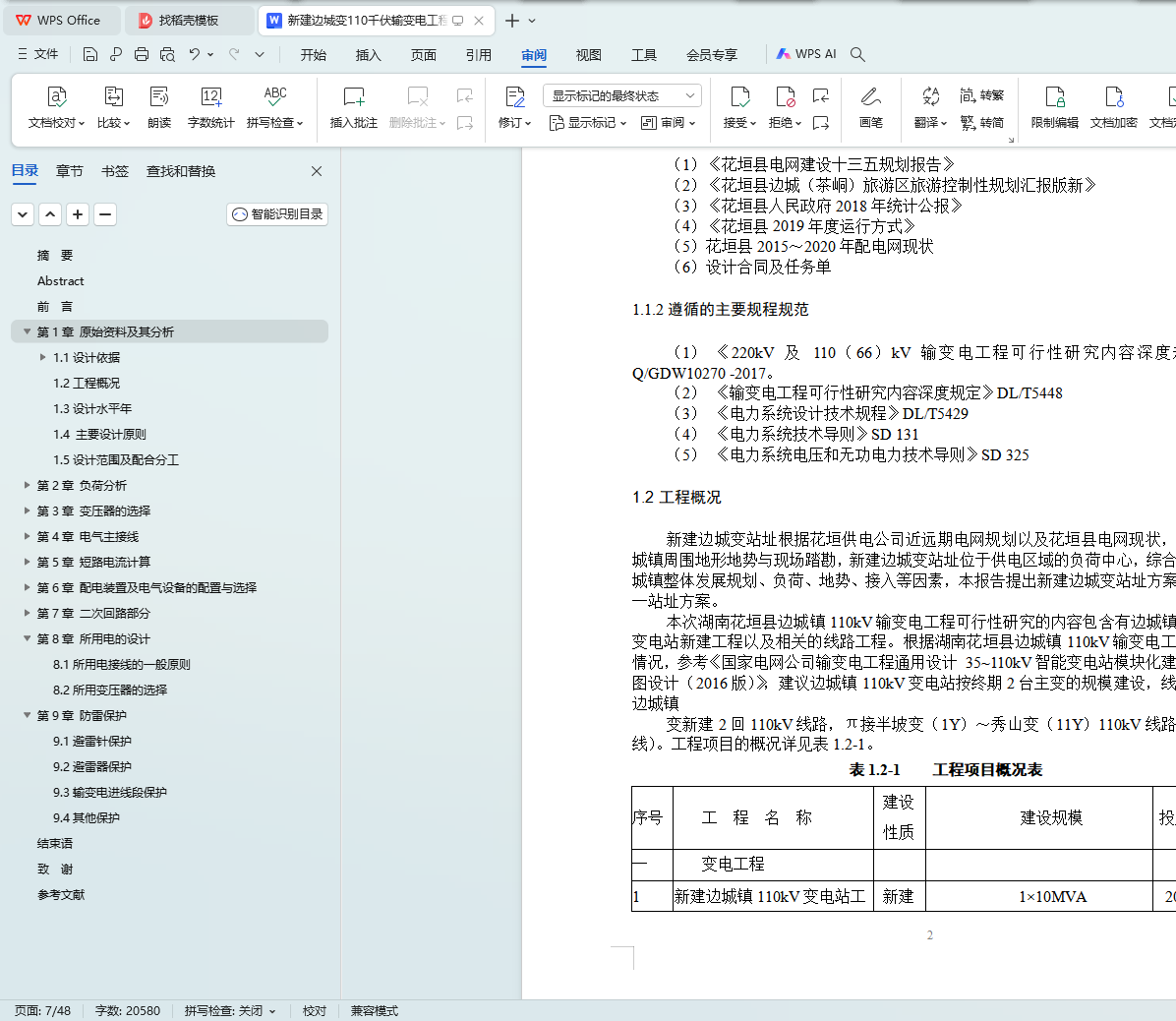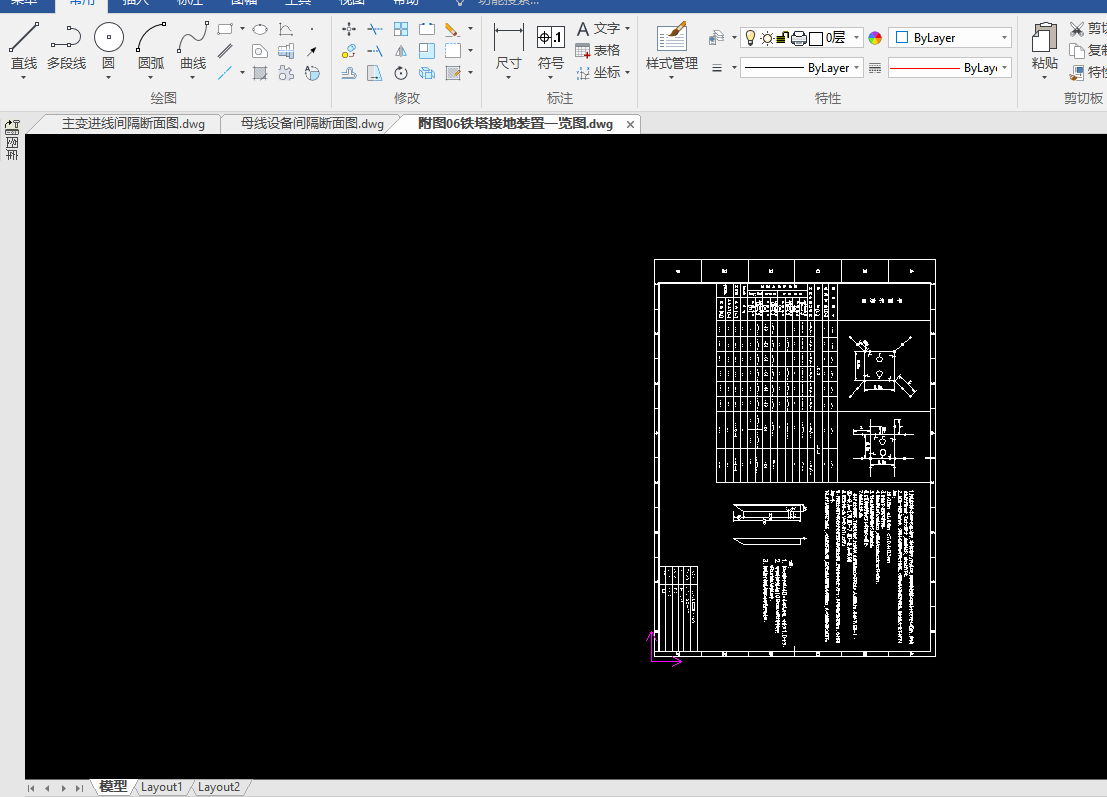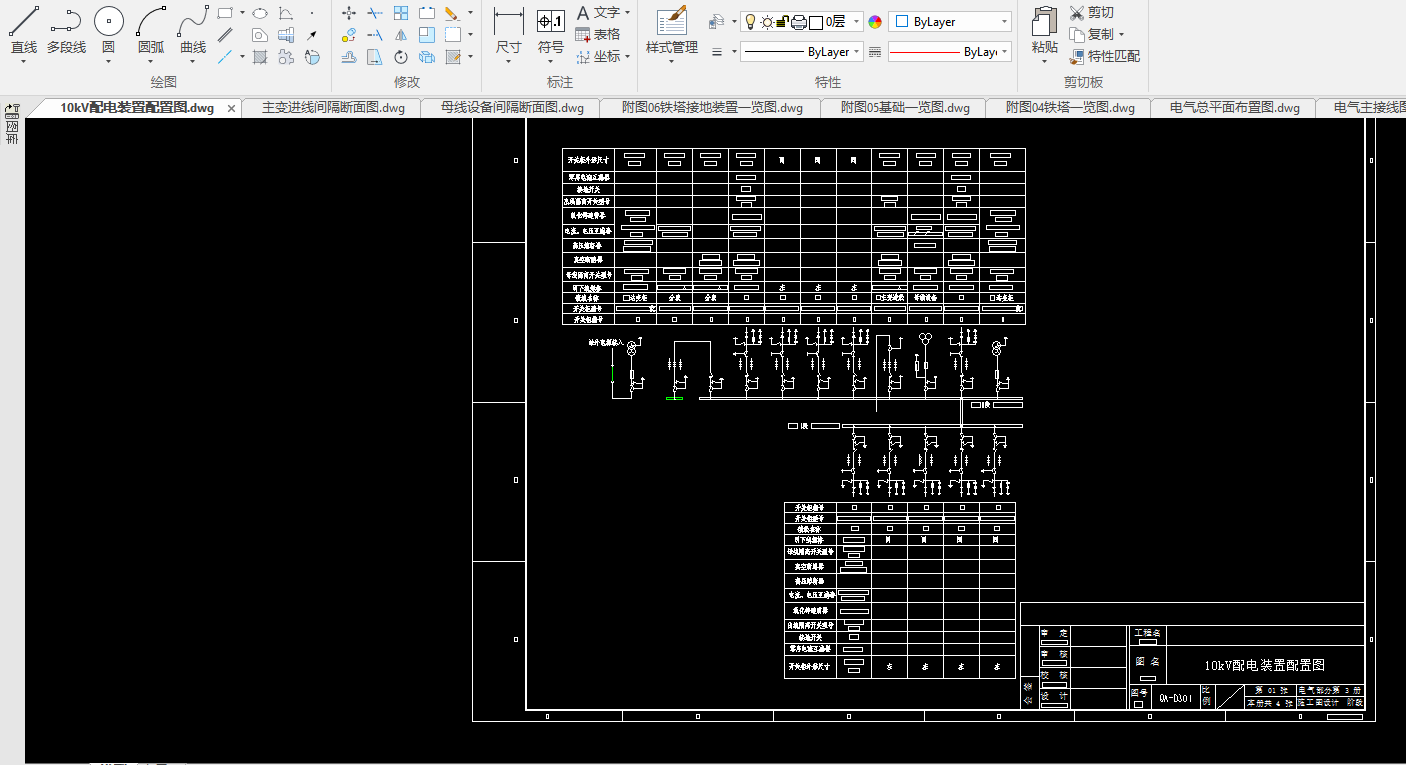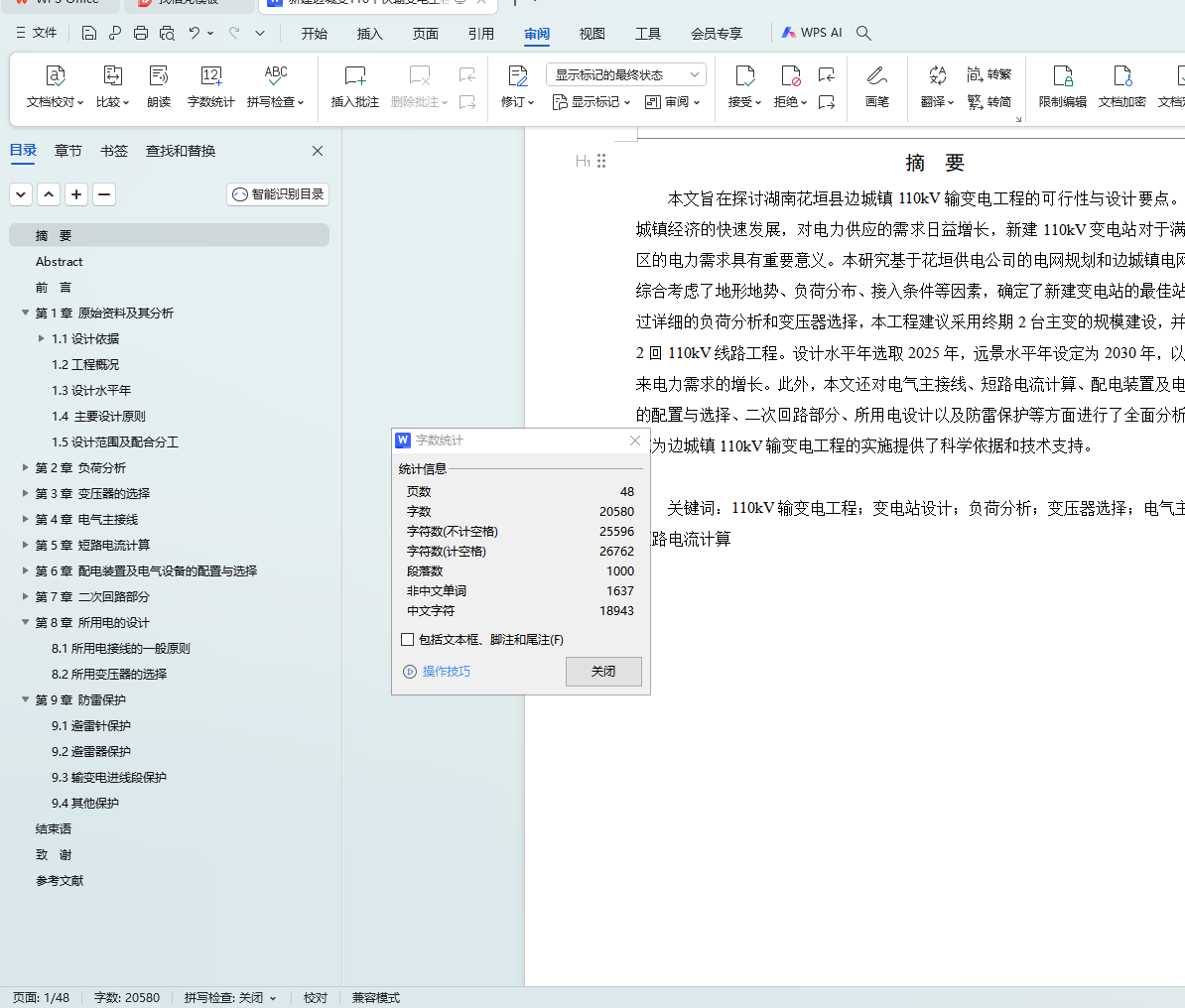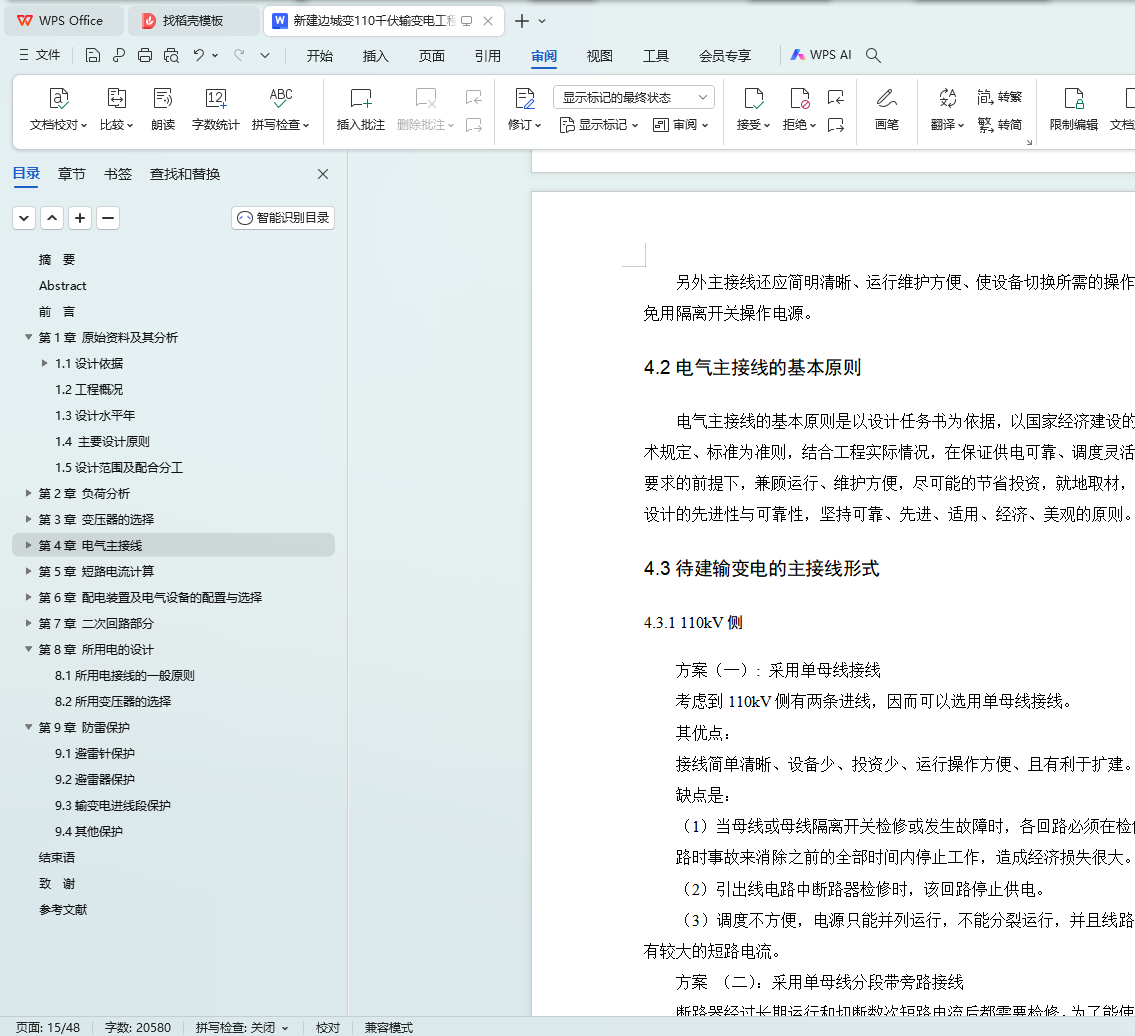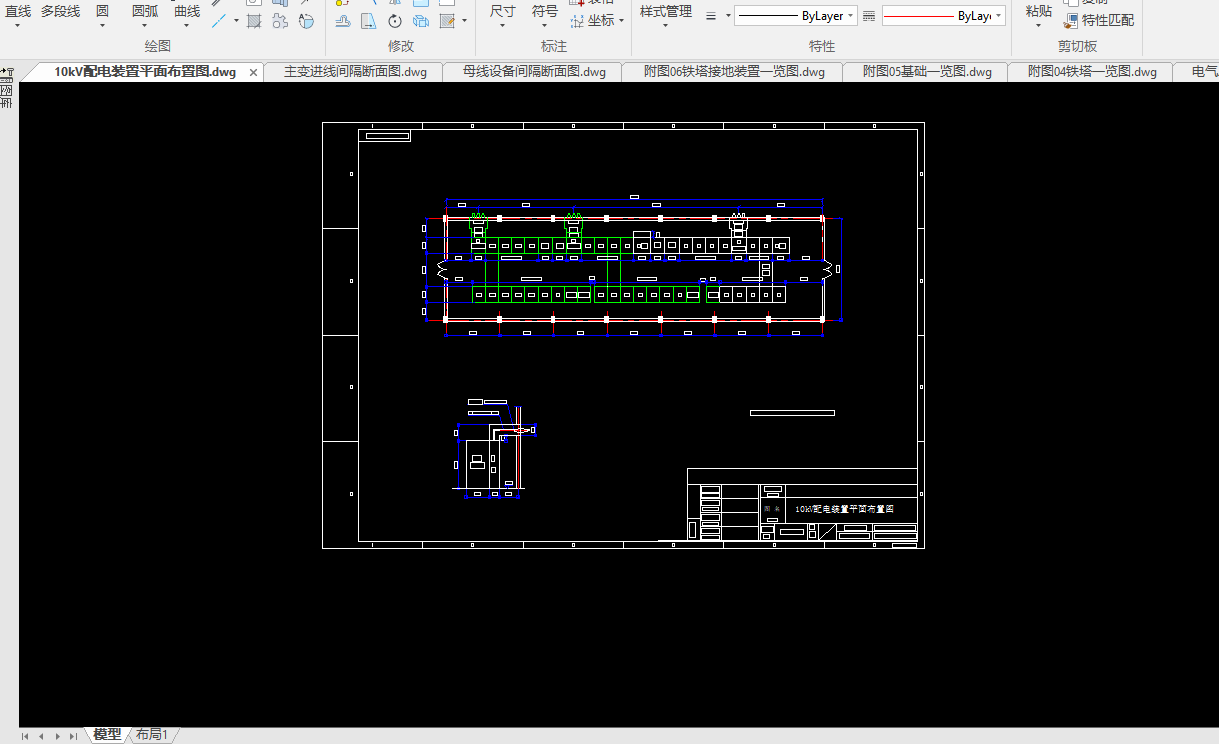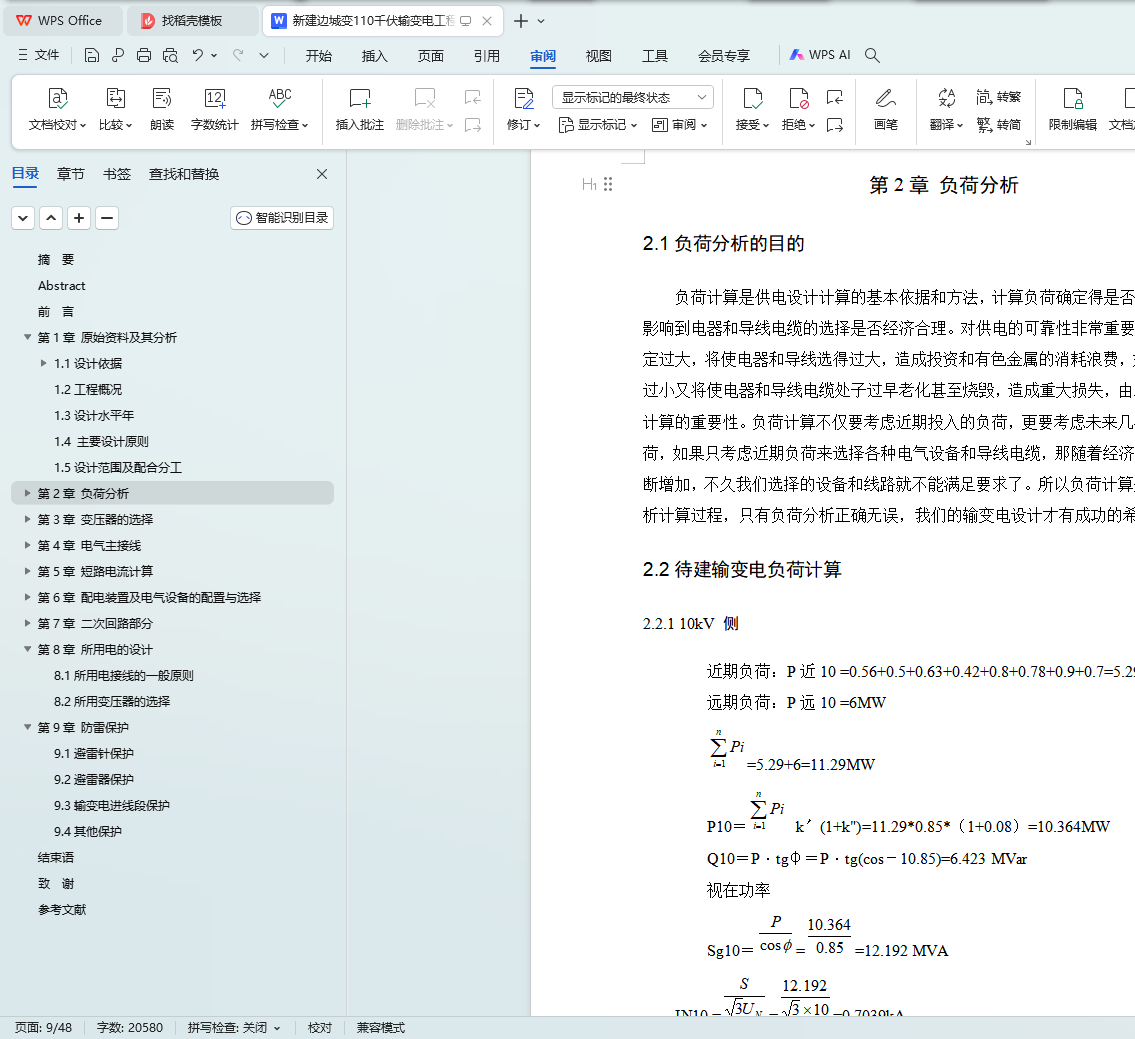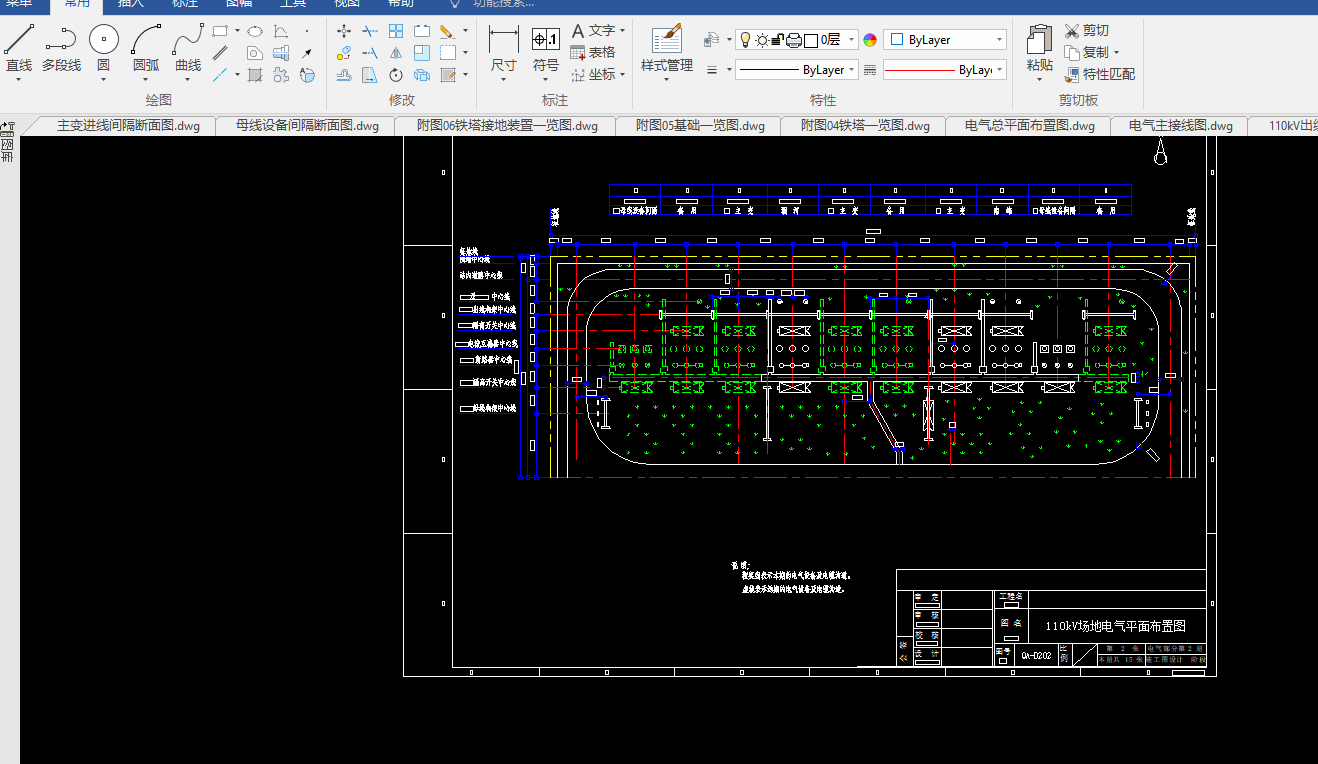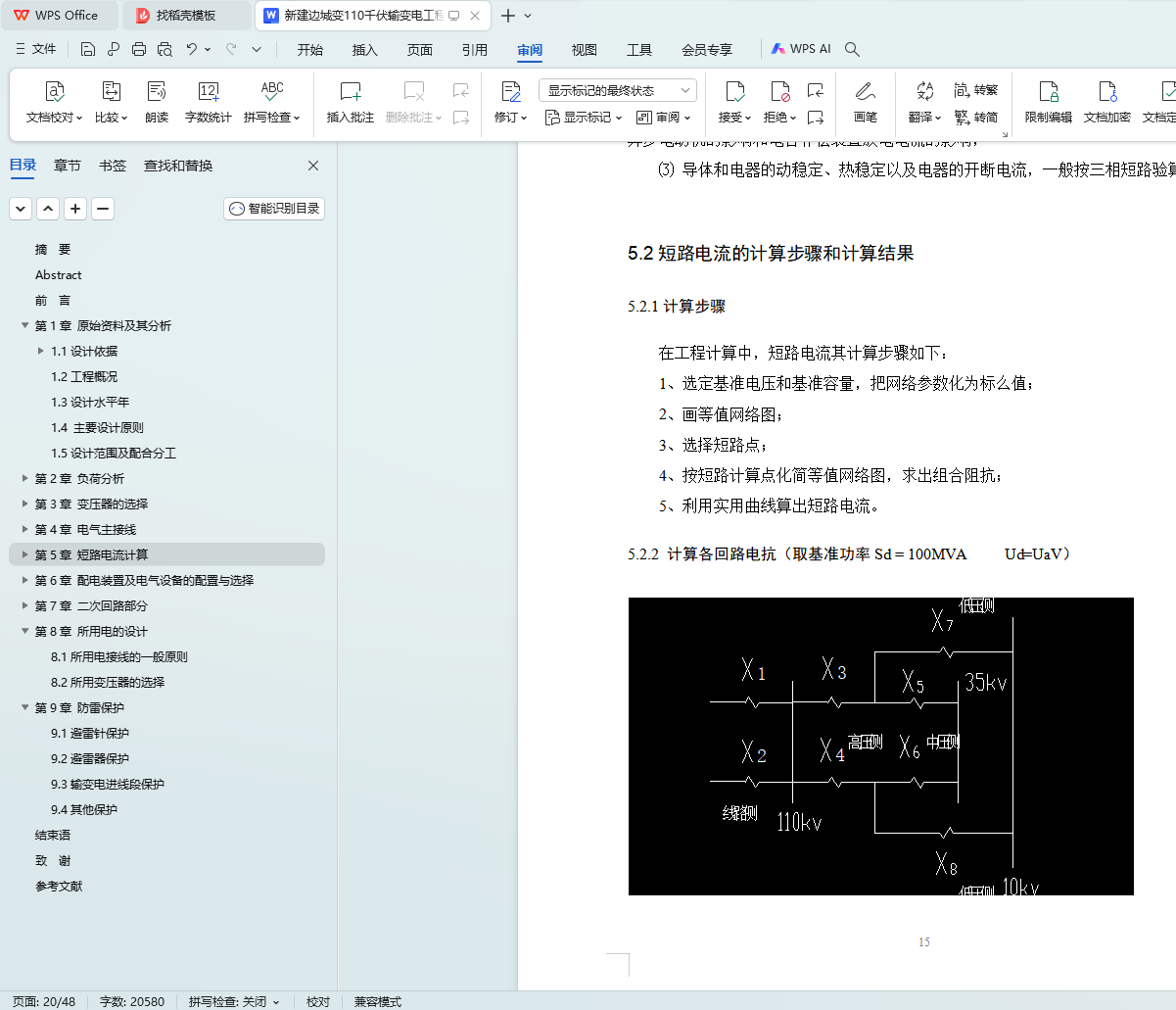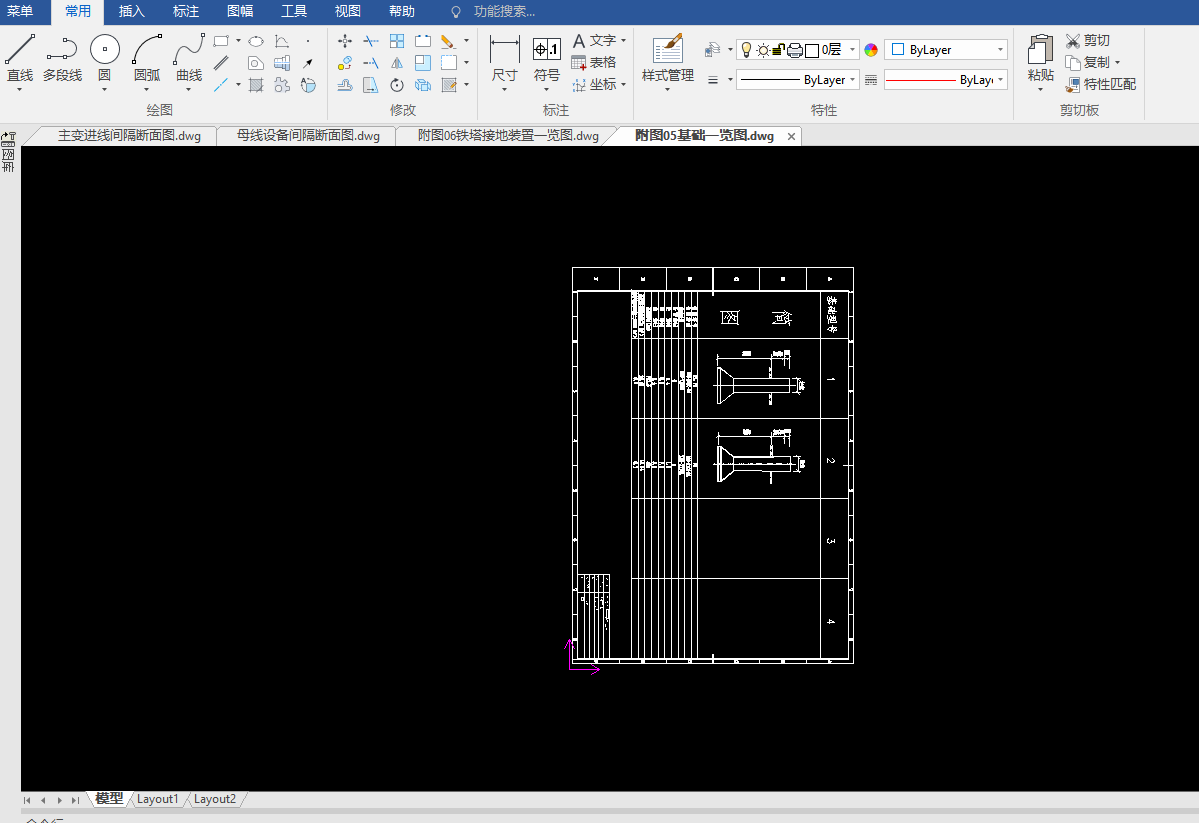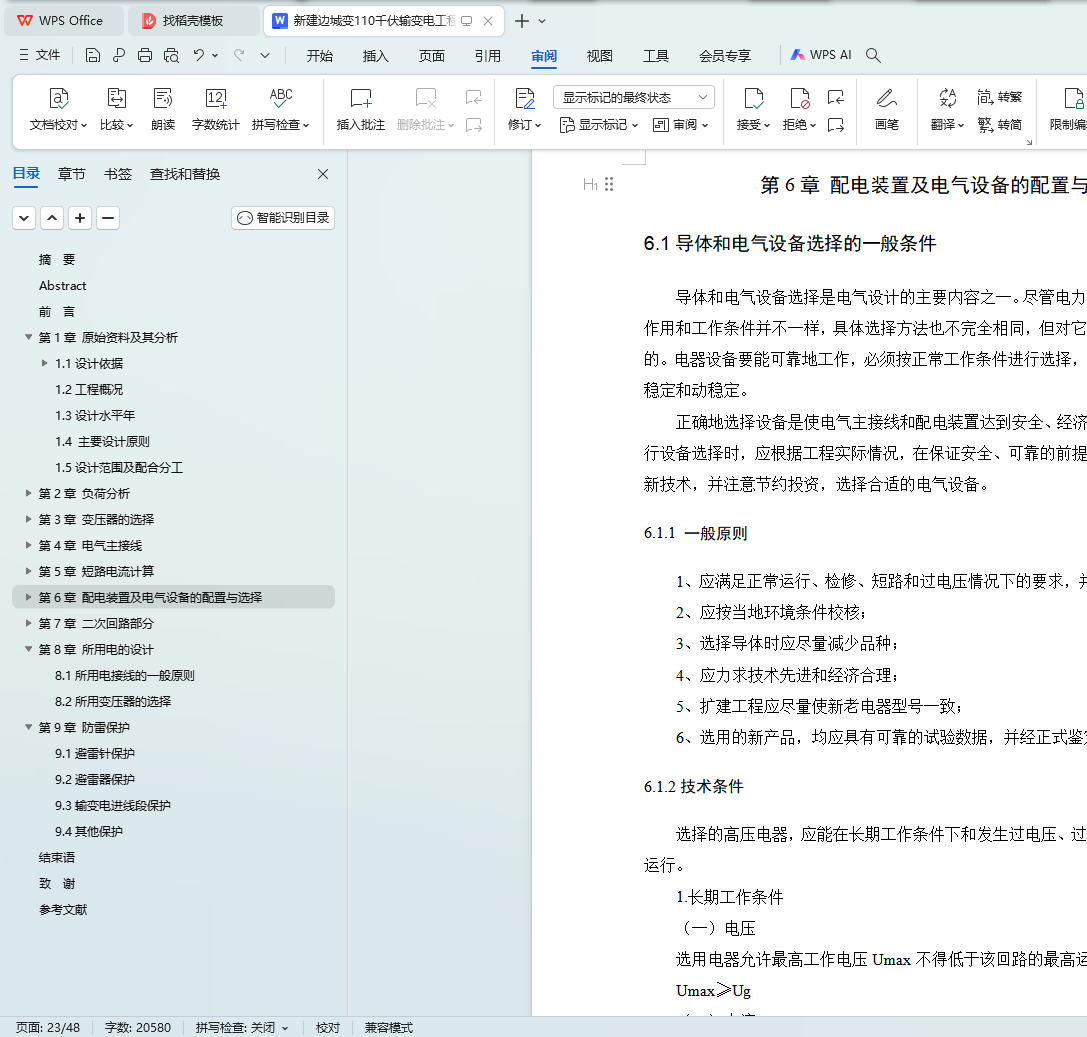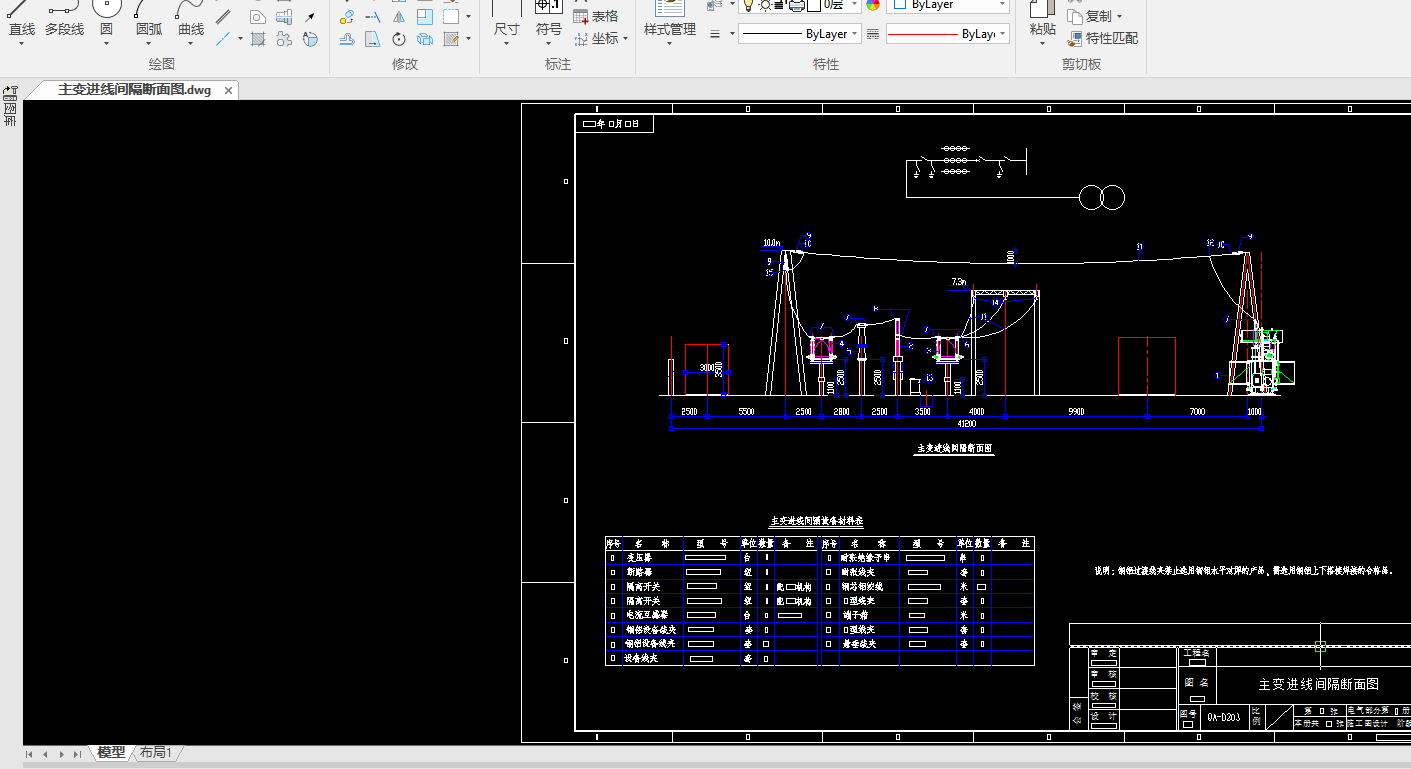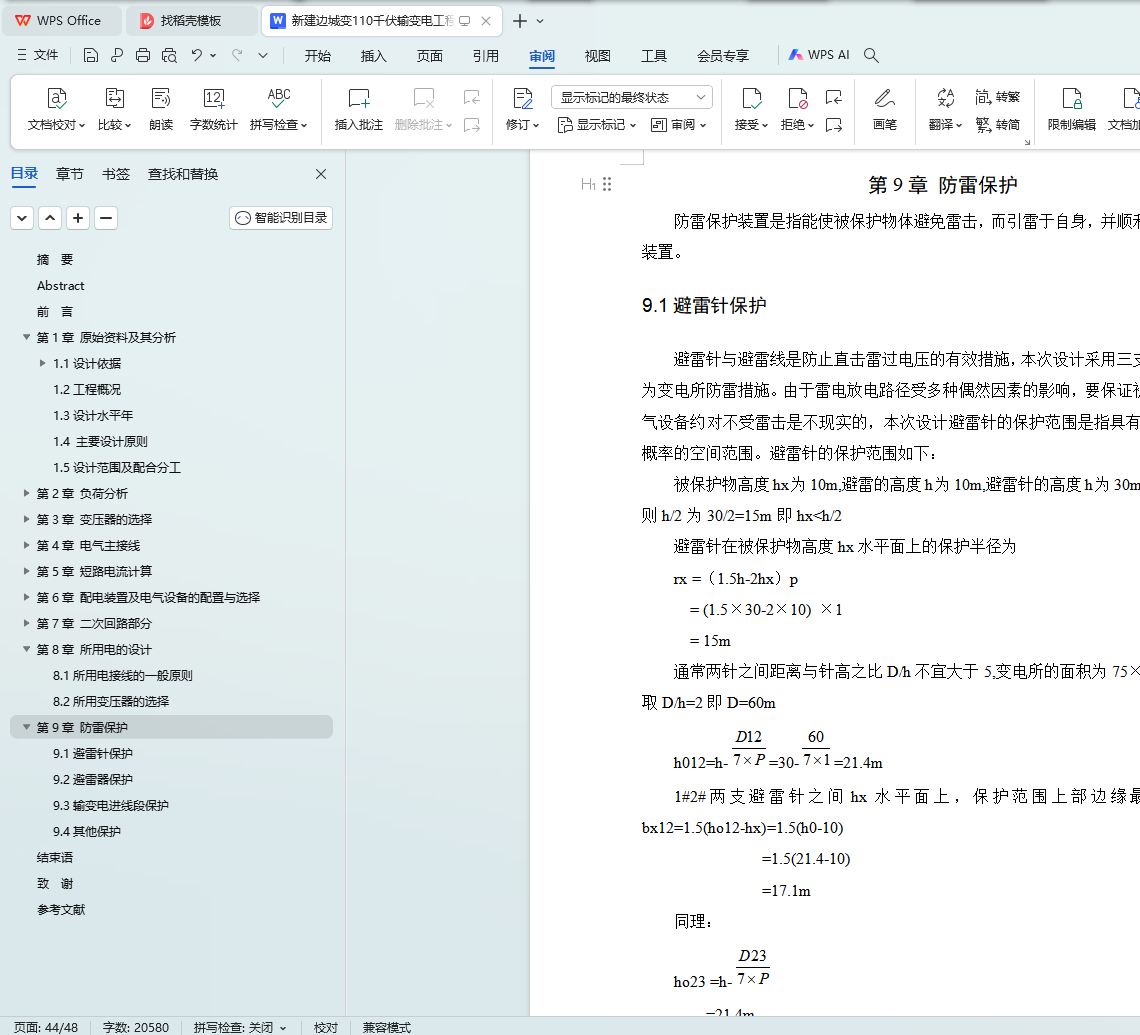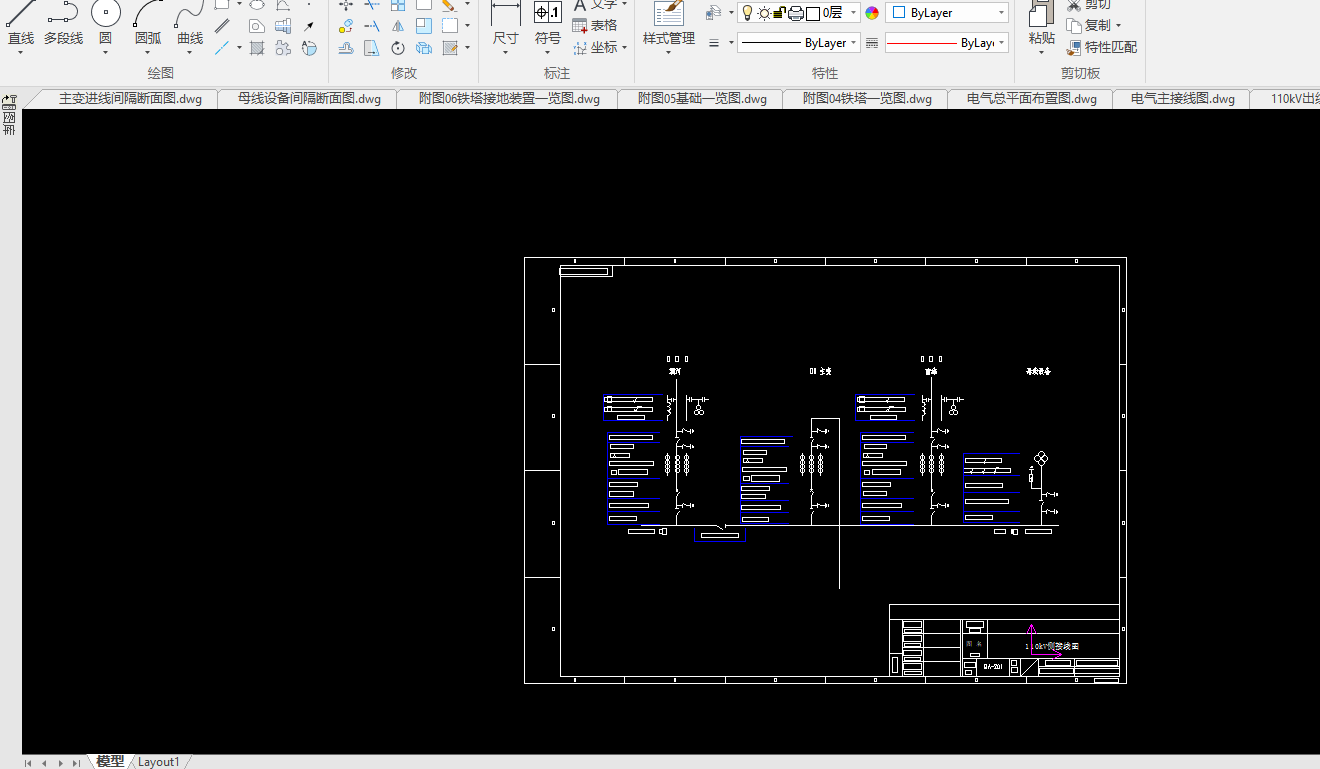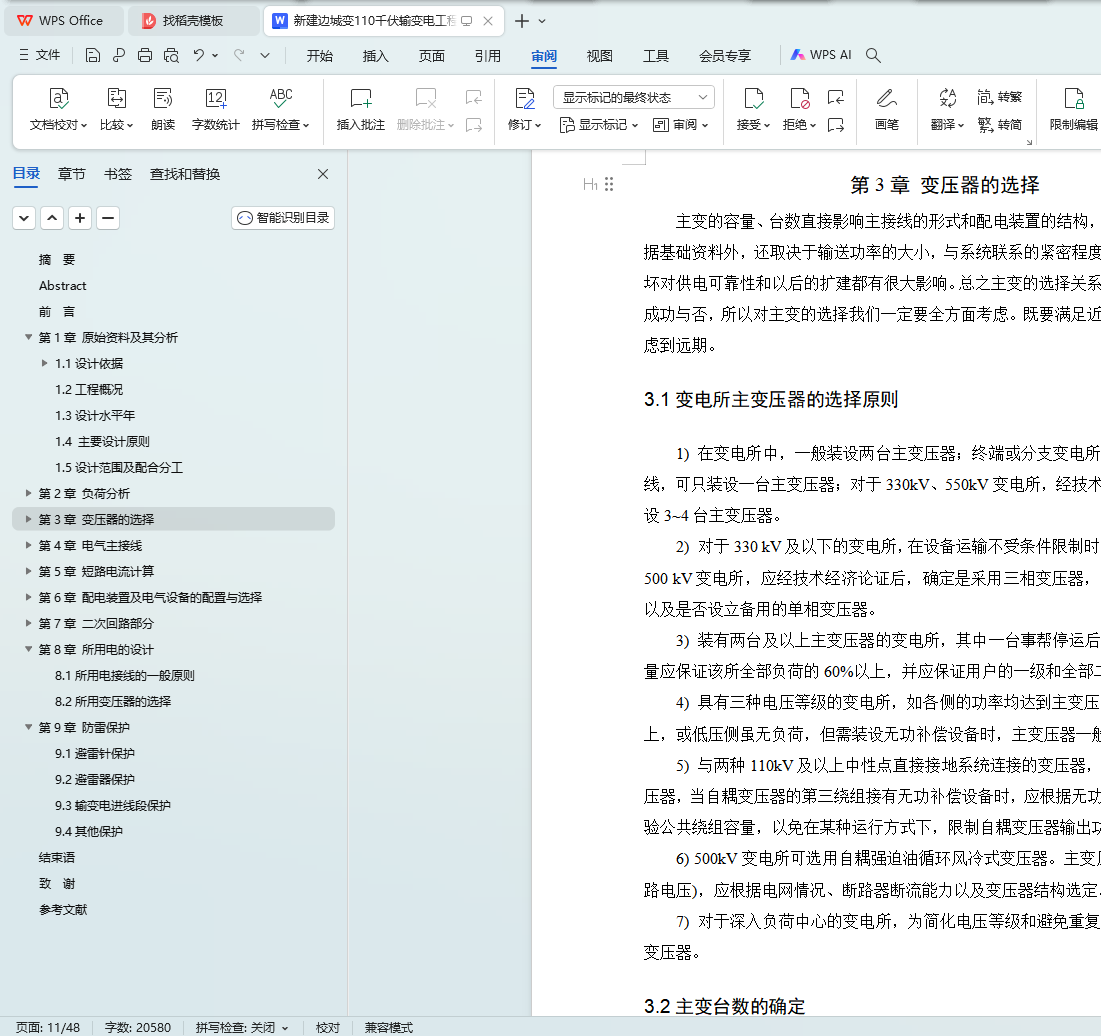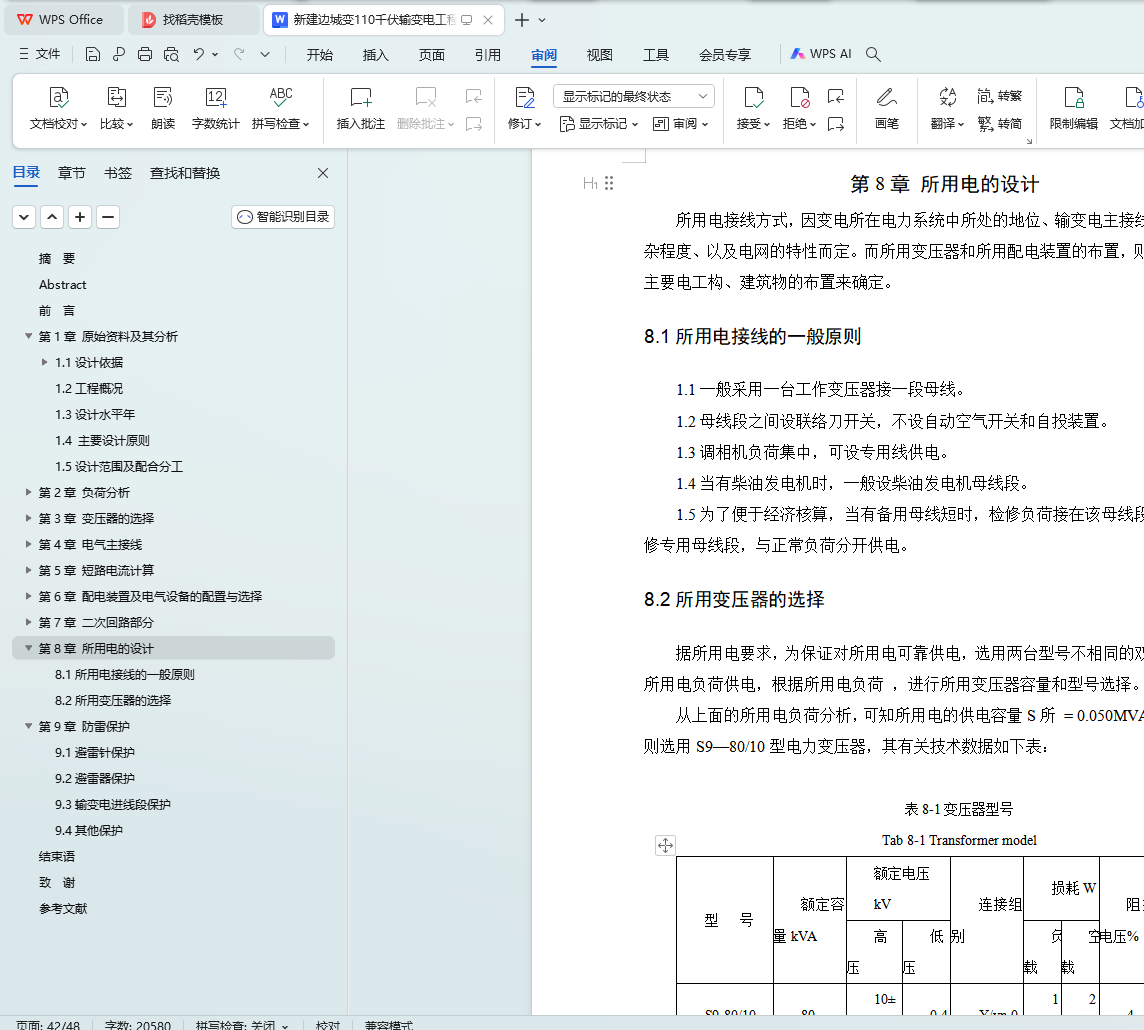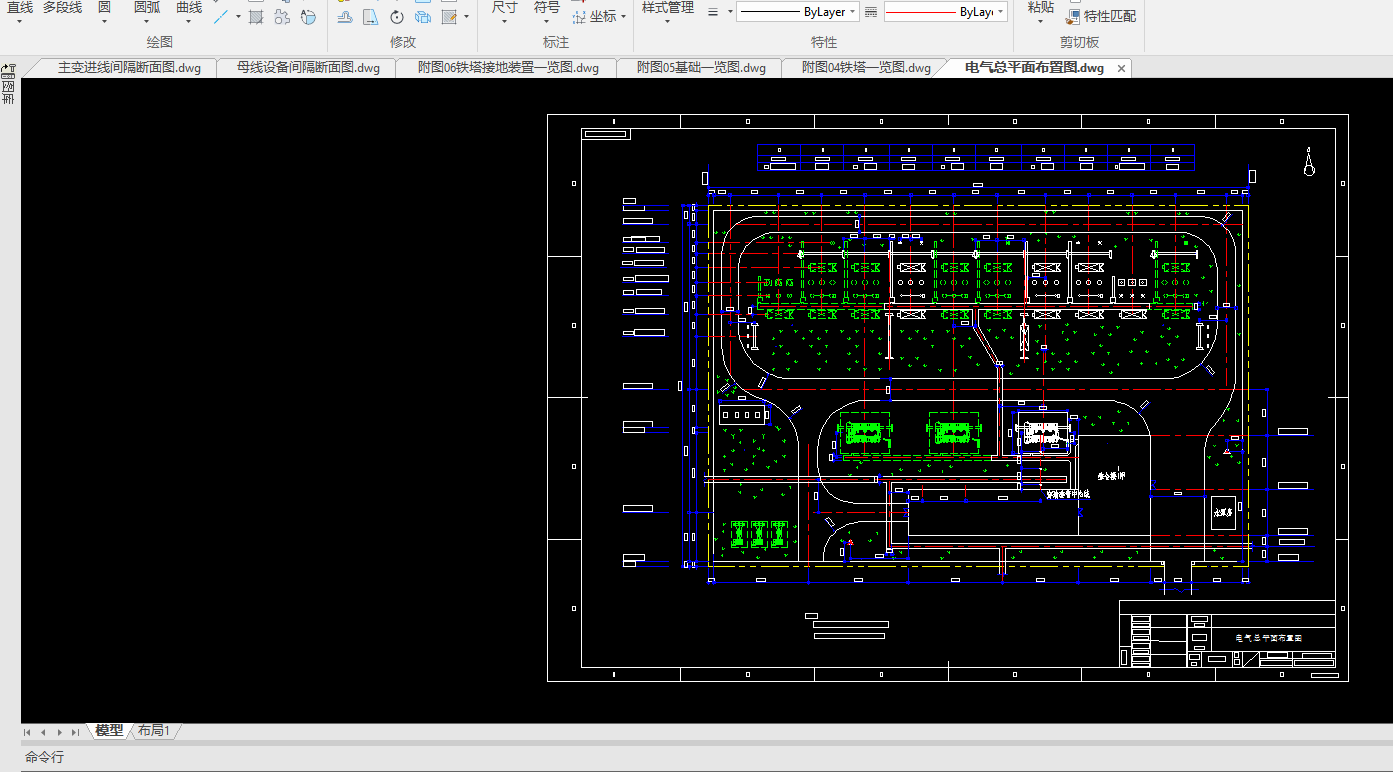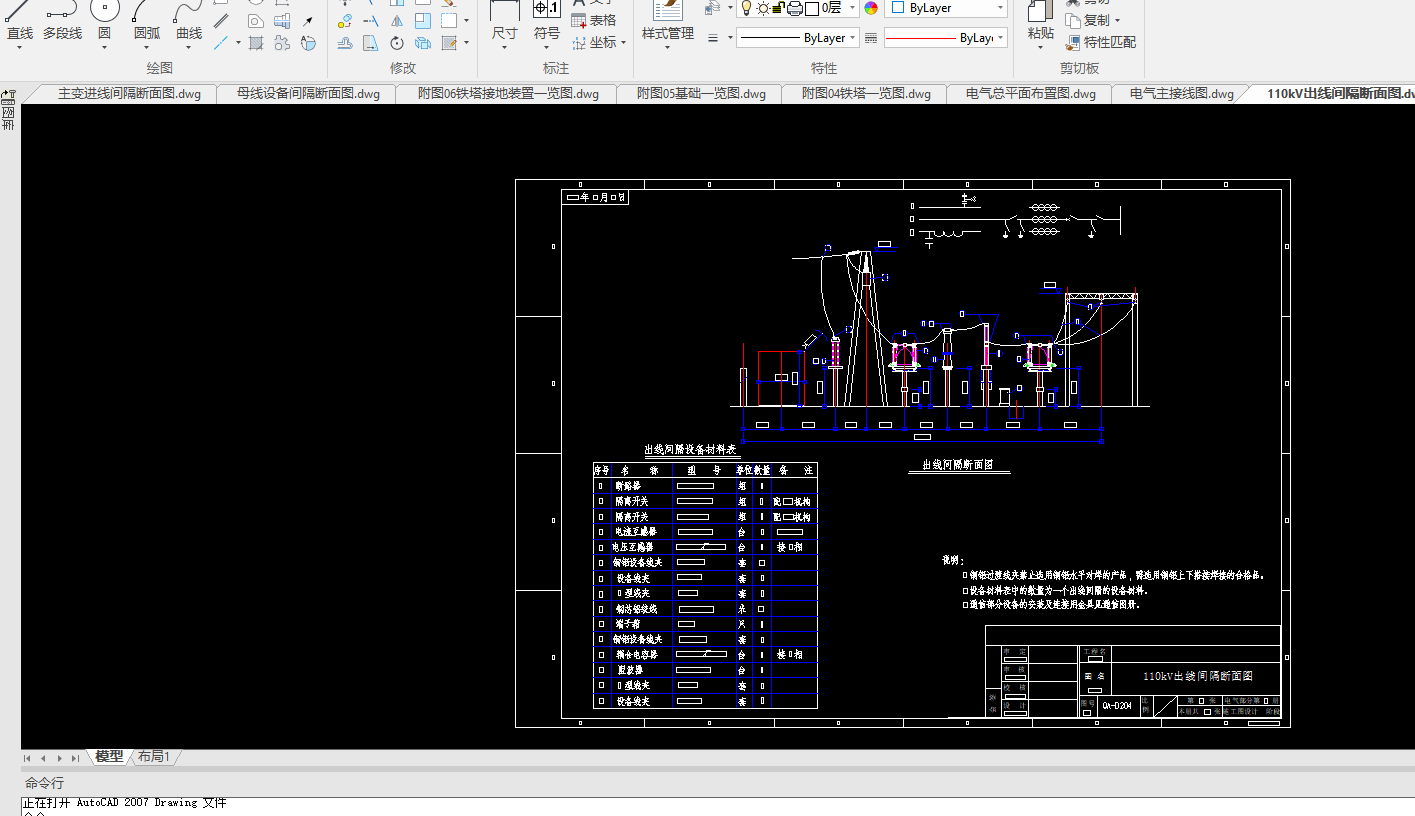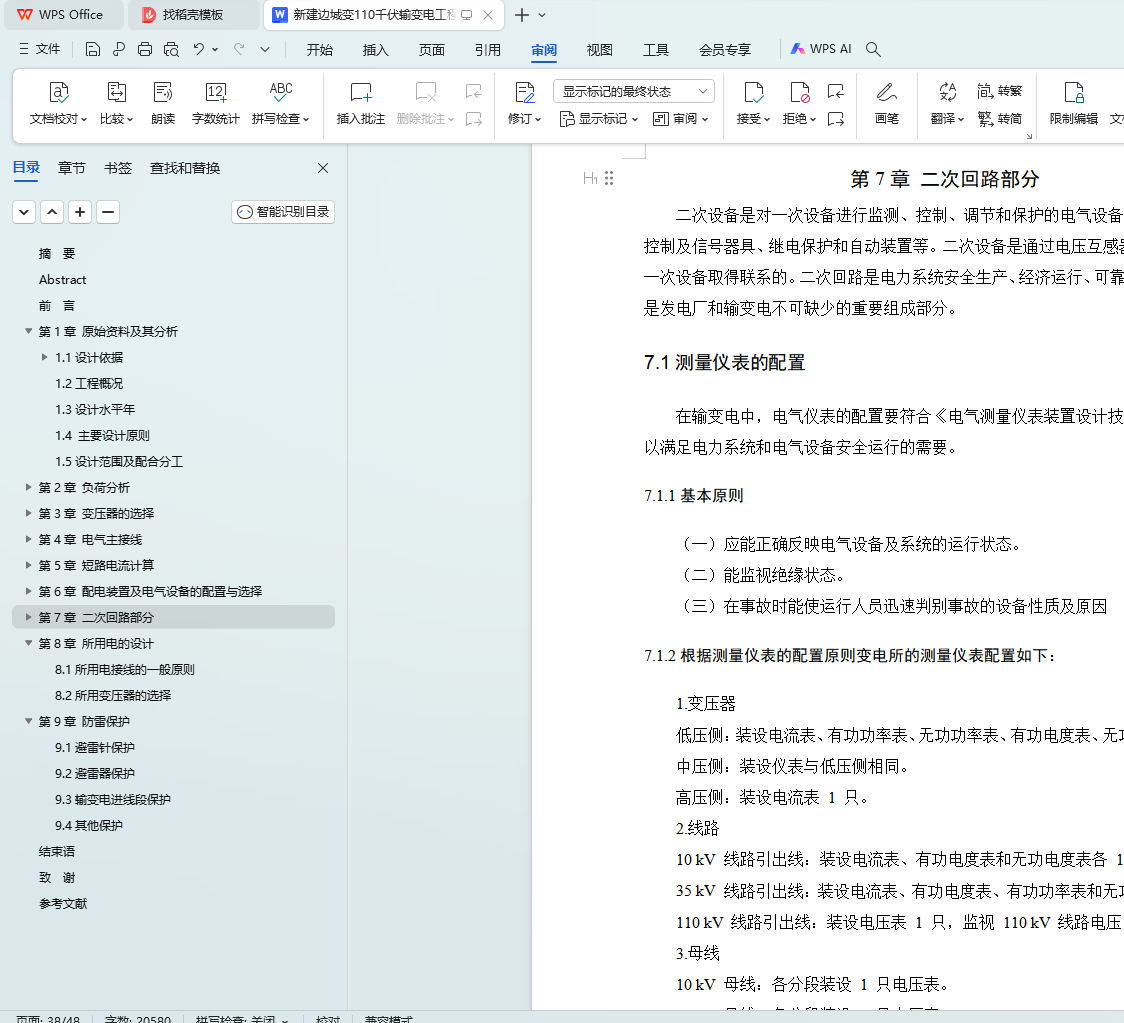摘 要
本文旨在探讨湖南花垣县边城镇110kV输变电工程的可行性与设计要点。随着边城镇经济的快速发展,对电力供应的需求日益增长,新建110kV变电站对于满足该地区的电力需求具有重要意义。本研究基于花垣供电公司的电网规划和边城镇电网现状,综合考虑了地形地势、负荷分布、接入条件等因素,确定了新建变电站的最佳站址。通过详细的负荷分析和变压器选择,本工程建议采用终期2台主变的规模建设,并规划了2回110kV线路工程。设计水平年选取2025年,远景水平年设定为2030年,以适应未来电力需求的增长。此外,本文还对电气主接线、短路电流计算、配电装置及电气设备的配置与选择、二次回路部分、所用电设计以及防雷保护等方面进行了全面分析。本研究为边城镇110kV输变电工程的实施提供了科学依据和技术支持。
关键词:110kV输变电工程;变电站设计;负荷分析;变压器选择;电气主接线;短路电流计算
Abstract
This paper aims to discuss the feasibility and design points of 110kV power transmission and transformation project in Bian Town, Huayuan County, Hunan Province. With the rapid economic development in Bian towns and the demand for power supply is increasing day by day, the new 110kV substation is of great significance to meet the power demand of this area. Based on the power grid planning of Huayuan Power Supply Company and the current situation of the border urban power grid, the best site of the new substation is determined. Through detailed load analysis and transformer selection, the project suggests to adopt the scale construction of two main transformers in the final period, and two 110kV line projects are planned. The design level year is selected in 2025, and the vision level year is set at 2030, to meet the future growth of power demand. In addition, this paper also makes a comprehensive analysis of the main electrical wiring, short circuit current calculation, distribution device and electrical equipment, secondary circuit, power design and lightning protection. This study provides scientific basis and technical support for the implementation of 110kV power transmission and transformation project in Bian Town.
Key words: 110kV power transmission and transformation project; substation design; load analysis; transformer selection; electrical main wiring; short-circuit current calculation
目 录
摘 要
Abstract
前 言
第1章 原始资料及其分析
1.1设计依据
1.1.1设计依据
1.1.2遵循的主要规程规范
1.2工程概况
1.3设计水平年
1.4 主要设计原则
1.5设计范围及配合分工
第2章 负荷分析
2.1负荷分析的目的
2.2待建输变电负荷计算
2.2.1 10kV 侧
2.2.2站用电容量
2.2.3待建输变电供电总容量
第3章 变压器的选择
3.1变电所主变压器的选择原则
3.2主变台数的确定
3.3主变压器容量的确定
3.4 变压器类型的确定
3.4.1相数的选择
3.4.2 绕组形式
3.4.3 普通型和自耦型的选择
3.4.4 中性点的接地方式
第4章 电气主接线
4.1对电气主接线的基本要求
4.1.1可靠性
4.1.2灵活性
4.1.3经济性
4.2电气主接线的基本原则
4.3待建输变电的主接线形式
4.3.1 110kV侧
4.3.2 10kV侧
第5章 短路电流计算
5.1短路电流计算的目的和条件
5.1.1短路电流计算的目的
5.1.2短路电流计算条件
5.2短路电流的计算步骤和计算结果
5.2.1计算步骤
5.2.2 计算各回路电抗(取基准功率Sd = 100MVA Ud=UaV)
第6章 配电装置及电气设备的配置与选择
6.1导体和电气设备选择的一般条件
6.1.1 一般原则
6.1.2技术条件
6.1.3 环境条件
6.2设备的选择
6.2.1断路器的选择
6.2.2隔离开关的选择
6.2.3导线的选择
6.2.4互感器的选择
6.2.5避雷器的选择
6.3高压配电装置的配置
6.3.1高压配电装置的设计原则与要求
6.3.2高压配电装置的配置
第7章 二次回路部分
7.1测量仪表的配置
7.1.1基本原则
7.1.2根据测量仪表的配置原则变电所的测量仪表配置如下:
7.2.继电保护的配置
7.2.1保护原则
7.2.2 变电所继电保护配置
第8章 所用电的设计
8.1所用电接线的一般原则
8.2所用变压器的选择
第9章 防雷保护
9.1避雷针保护
9.2避雷器保护
9.3输变电进线段保护
9.4其他保护
结束语
致 谢
参考文献
